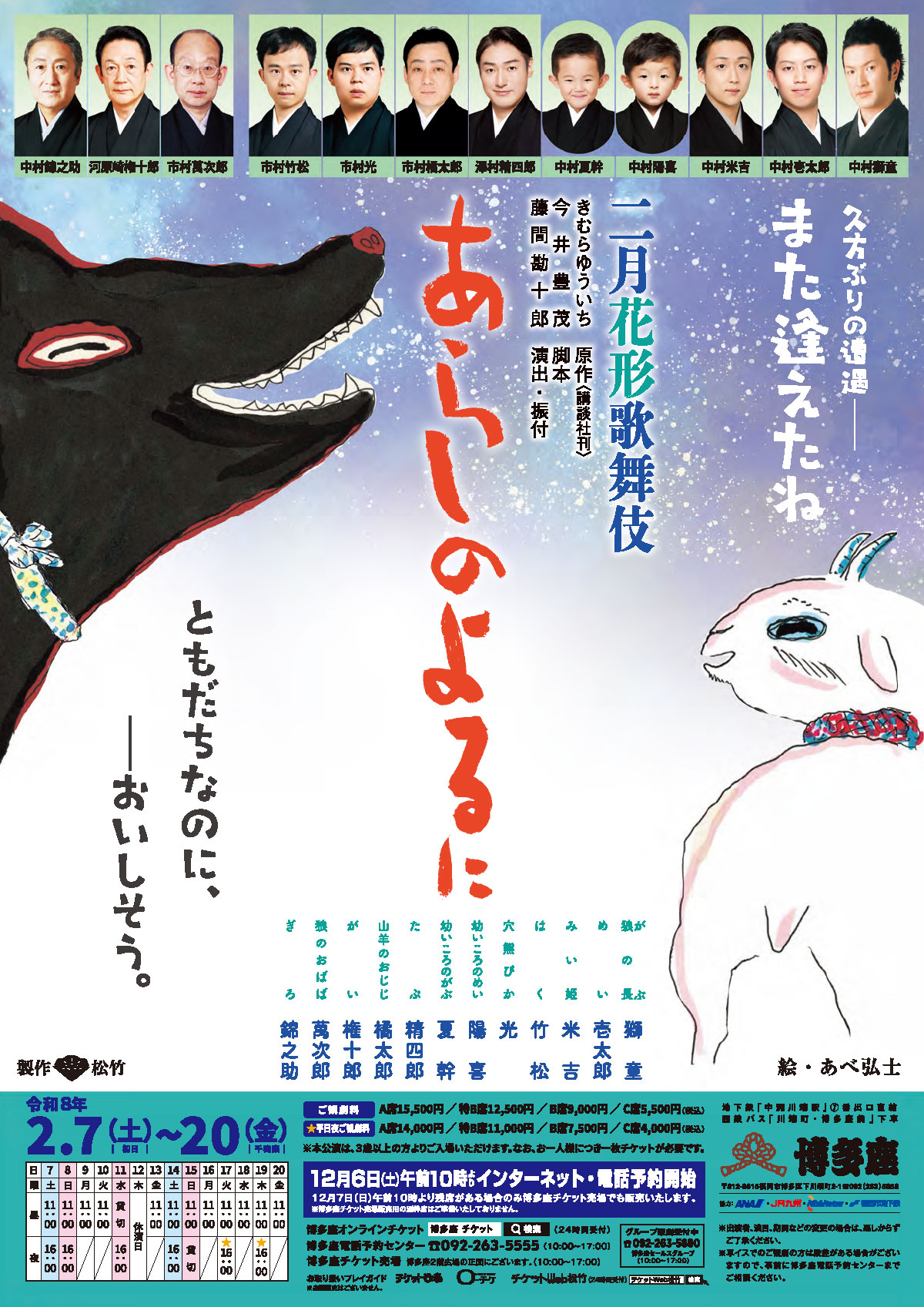ARASHI NO YORU NI

- Tickets (tax inc.)
- ■Regular Ticket Price
- A Seat
- 15,500 yen
- Special B Seat
- 12,500 yen
- B Seat
- 9,000 yen
- C Seat
- 5,500 yen
- ■Weekday Evening Ticket Price
- A Seat
- 14,000 yen
- Special B Seat
- 11,000 yen
- B Seat
- 7,500 yen
- C Seat
- 4,000 yen
Date
February 7 (Sat) - February 20 (Fri), 2026
Matinee: curtain goes up at 11:00 a.m.(Private performance : February 11)
Soiree: curtain goes up at 4:00 p.m. (Private performance : February 15)
*Closed: February 12(Thu)
On Sale (JST)
December 6 (Sat), 2025 10:00 a.m.
Highlights/Synopsis
[Highlights]
You will see a kabuki play adapted from a best-selling picture book series portraying the strange friendship between a wolf and a goat, which was first published 30 years ago and proved a big hit.
[Synopsis]
On the night of a storm, Gabu, a wolf, and Mei, a goat, happen to meet in a mountain hut under the cover of darkness. Unable to see what each other looks like or to tell who they are, they talk throughout the night and become friends. Before parting, they decide to use "one stormy night" as a secret code and promise to meet the next day. When they are reunited, they are shocked to find out each other's identity, for wolves are goats' natural enemy, but they cultivate their friendship keeping it a secret to both of their groups. However, soon their friendship is revealed and they face violent opposition. To protect their friendship, they run away into the snow-covered mountains and...
